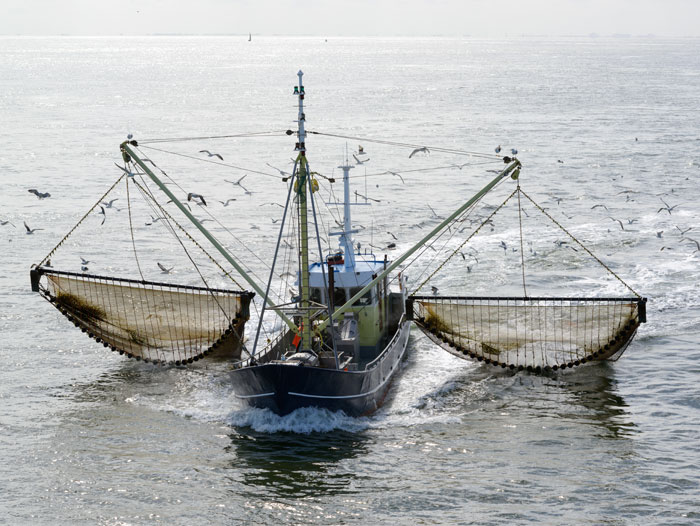Louisiana Shrimp Landings Again Reported to Be Lowest in Last 18 Years; Reporting Issues May Be Cause
June 20, 2019 | 3 min to read

This morning, the Fishery Monitoring Branch of the National Oceanic and Atmospheric Administration (NOAA) Fisheries’ Southeast Fisheries Science Center released shrimp landings data from the Gulf of Mexico for May 2019.
For the second straight month, shrimp landings reported in the state of Louisiana were massively out of line with those reported for the month of May over the prior seventeen years. Last month, NOAA reports that 3.3 million pounds of shrimp were landed in Louisiana, an amount that is 67.1 percent below the prior seventeen-year historic average for the month (10.1 million pounds) and the lowest reported for any May in the historic dataset maintained by the Southern Shrimp Alliance.
The same observations hold true for the total shrimp landings reported for the state of Louisiana by NOAA for the first five months of this year. Since January, NOAA reports that 4.8 million pounds of shrimp have been landed in Louisiana, an amount that is 65.8 percent below the prior seventeen-year historic average (14.1 million pounds) and the lowest reported for the first five months of any year in the historic dataset maintained by the Southern Shrimp Alliance.
Similarly, the volume of shrimp landings reported from the West Coast of Florida are inconsistent with historic experience. Last month, NOAA reported that 370,000 pounds of shrimp were landed in the West Coast of Florida, the third lowest harvest in any May over the last eighteen years and 47 percent below the prior seventeen-year historic average (698,000 pounds). For the year, shrimp landings reported in the West Coast of Florida were reported to be just 1.6 million pounds – the lowest ever reported over the first five months of any year in the historic dataset maintained by the Southern Shrimp Alliance, and 49.2 percent below the prior seventeen year historic average (3.1 million pounds).
In contrast, the volume numbers reported for Texas and Alabama exceeded historic experience. NOAA reports that 2.7 million pounds of shrimp were landed in Texas in May, an amount 26.3 percent above the prior seventeen-year historic average (2.1 million pounds), while 760,000 pounds of shrimp were landed in Alabama last month, an amount 39.8 percent above the prior seventeen-year historic average (534,000 pounds). For the year, shrimp landings in both Texas (18.6 percent above) and Alabama (53.5 percent above) are significantly higher than the prior seventeen-year historic average for landings over the first five months.
Last month, NOAA was also unable, for the first time, to report ex-vessel prices for any shrimp landed in the northern Gulf (Alabama, Louisiana, and Mississippi), in addition to being unable to report ex-vessel prices for two count sizes of shrimp (36-40 and 41-50) landed in the eastern Gulf (the west coast of Florida).
Ex-vessel prices in the Western Gulf (Texas) last month were reported to be below prices paid in May 2018.
NOAA’s monthly reporting of shrimp landings in the Gulf of Mexico includes this disclaimer:
“BE ADVISED THAT THE SUMMARIES IN THIS REPORT ARE COLLECTED OR ESTIMATED BY THE FEDERAL PORT AGENTS AND MAY NOT REFLECT THE LANDINGS FROM THE STATES”
The numbers reported – and the ex-vessel prices that have not been reported – over the last several months by NOAA appear to indicate that port agents have been unable to collect information in the same manner as they have done historically. Nevertheless, this monthly reporting data is important to the commercial shrimpers, as it provides the industry with the ability to quickly assess the impact of outside events on the fishery, as well as identify what concerns the industry needs to prioritize.
Please click the following link to view SSA’s compilation and summary of May 2002-2019 Shrimp Landings and Ex-Vessel Prices for May 2001-2019: http://www.shrimpalliance.com/wp-content/uploads/2019/06/May-2019-Landings.pdf
About the Southern Shrimp Alliance
The Southern Shrimp Alliance (SSA) is an organization of shrimp fishermen, shrimp processors, and other members of the domestic industry in the eight warmwater shrimp producing states of Alabama, Florida, Georgia, Louisiana, Mississippi, North Carolina, South Carolina, and Texas.
